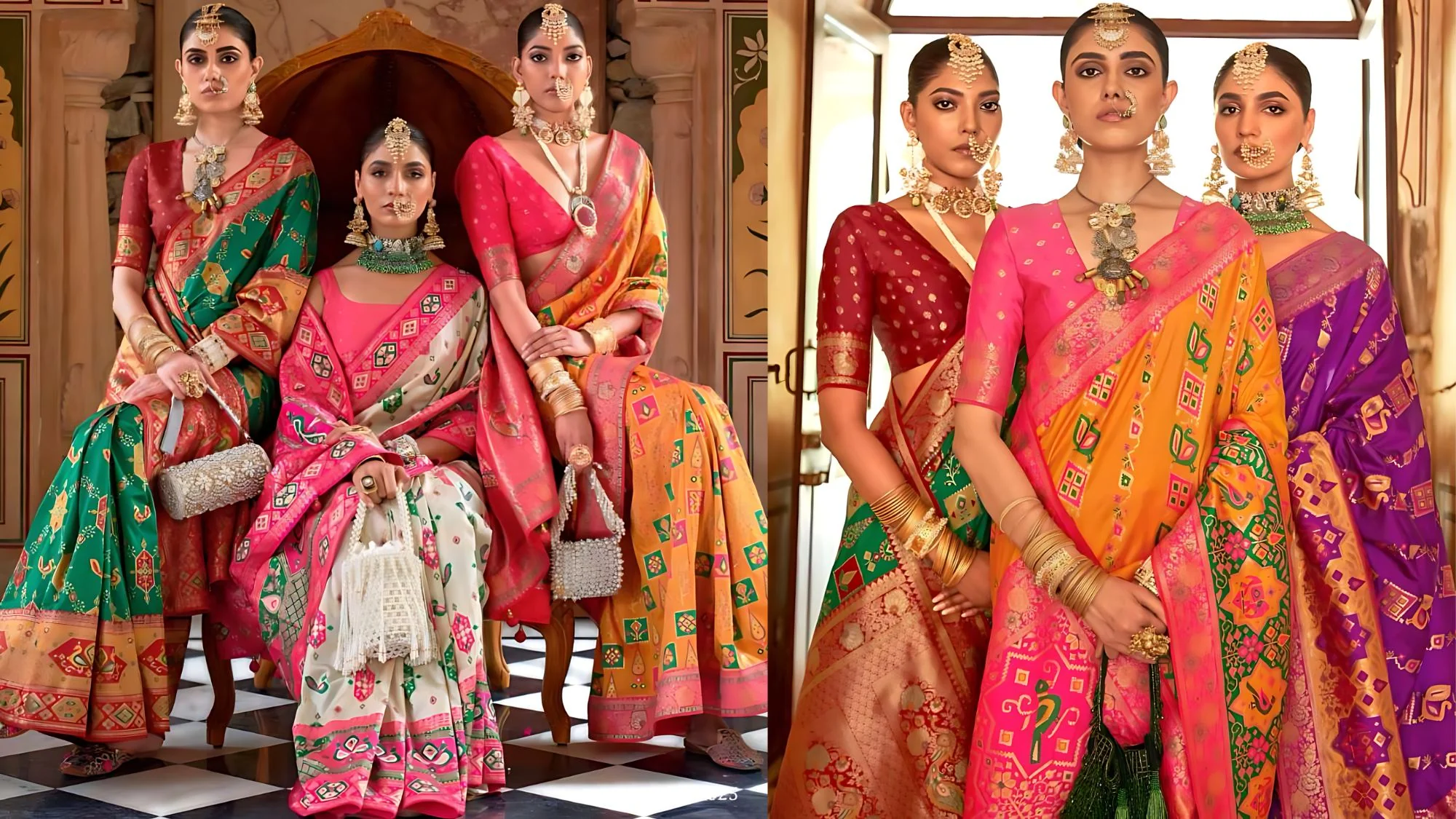Indian weddings change every year – new themes, new lehengas, even destination ceremonies. But one thing that never goes out of fashion is a handloom saree. Honestly, ask any Indian family and they’ll tell you that the bride’s trousseau feels incomplete without at least one Indian handloom saree for wedding functions.
What Makes Handloom Sarees Special?
Handloom isn’t just fabric. It’s patience, tradition, and months of effort by local weavers. A Banarasi saree can take 15–20 days to complete, sometimes more. The zari, the motifs, the shine – these are not things a machine can give. That’s why even in 2025, brides still pick them.
Some simple reasons:
- They look rich without being “too loud.”
- Every region has its own style – Banarasi, Kanjeevaram, Paithani, Patola.
- They last for years and can be passed on, just like heirlooms.
The Sarees That Rule Weddings
1. Banarasi Silk – Pure Royalty from Varanasi
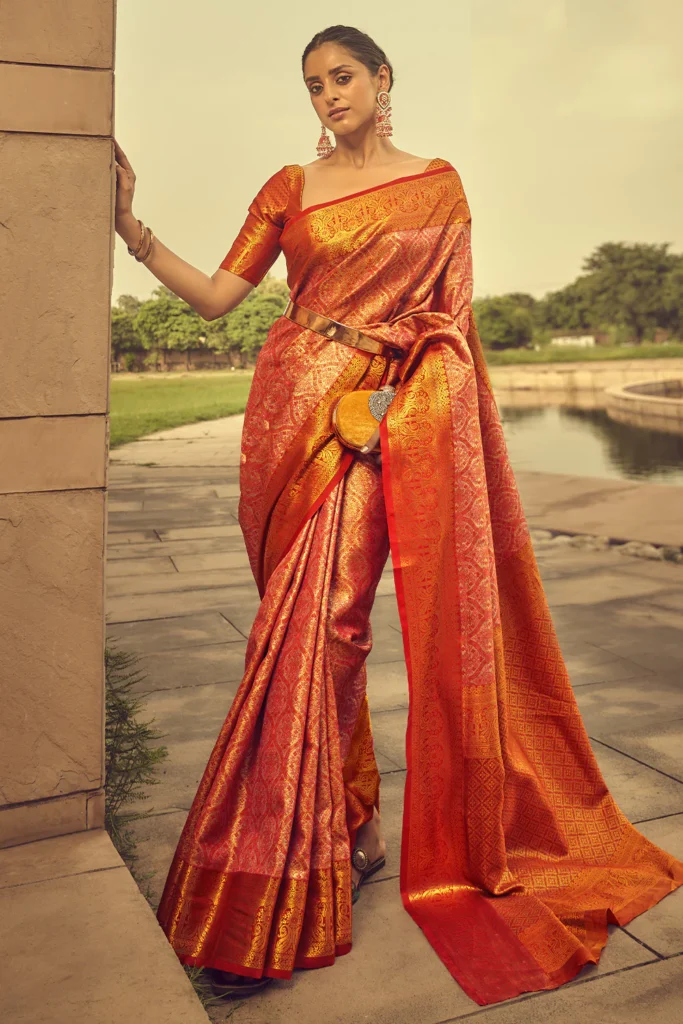
If there is one saree that instantly reminds people of Indian weddings, it has to be the Banarasi silk saree. Woven in Varanasi, these sarees are famous for their golden brocade and intricate Mughal-inspired motifs. The borders are heavy, the fabric has a natural shine, and the drape makes any bride look regal. A Banarasi in deep red or maroon, paired with temple jewelry, is often the centerpiece of North Indian bridal wear. Many families even gift a Banarasi to daughters as a symbol of prosperity and heritage.
2. Kanjeevaram – The Queen of Silks
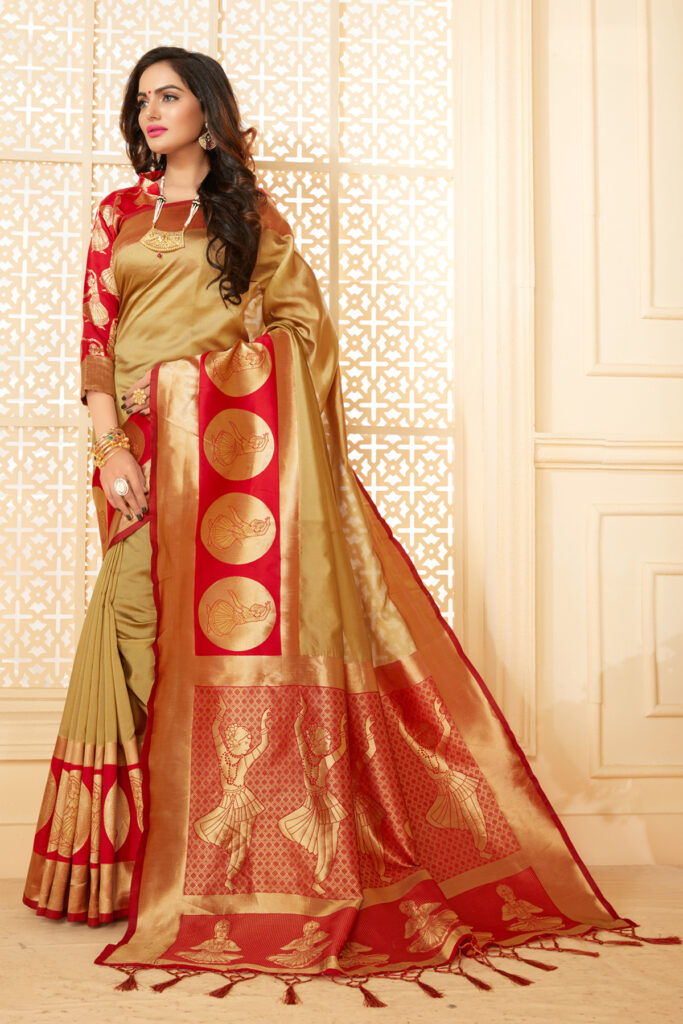
A South Indian bride’s wedding trousseau is incomplete without a Kanjeevaram saree. These sarees, woven in Tamil Nadu, are known for their durability and grandeur. The hallmark is the contrast between the body and the border – bright temple patterns, checks, stripes, and thick zari woven in real gold or silver threads. What makes a Kanjeevaram special is that it lasts a lifetime; it is not just a saree but a memory to be passed on from mother to daughter. Brides usually choose bold colors like royal blue, emerald green, or crimson red.
3. Paithani – The Maharashtrian Treasure
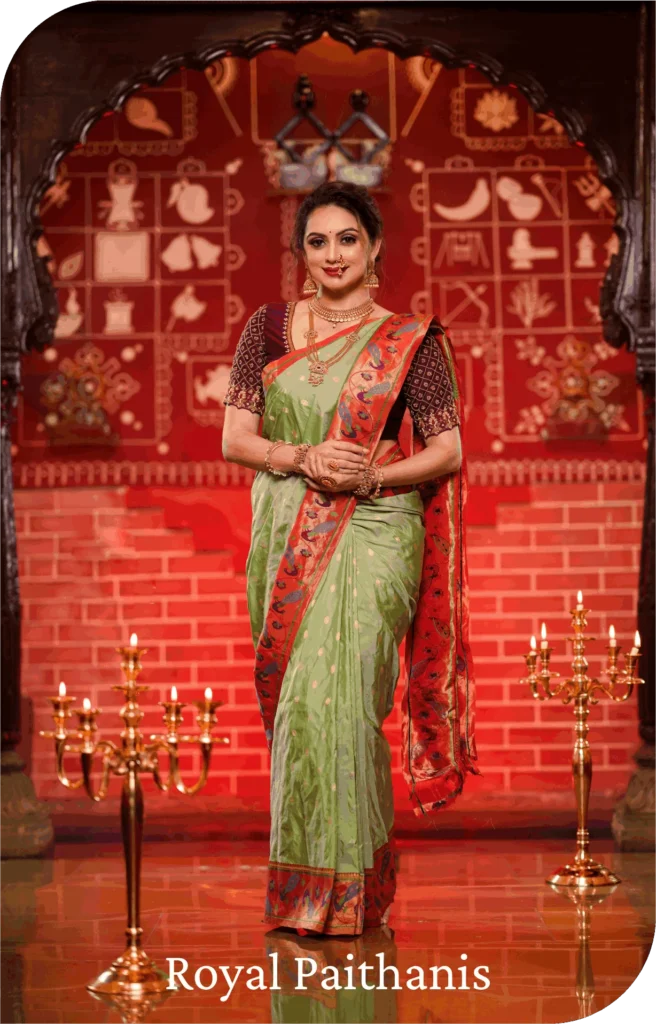
Originating from Maharashtra, the Paithani saree is considered one of the finest handloom traditions of India. What sets it apart are the delicate peacock and floral designs, handwoven into rich silk. The pallus often depict vibrant motifs like parrots, lotuses, and traditional geometric shapes. Paithani sarees are extremely time-consuming to weave – a single saree can take months. For Maharashtrian brides, wearing a Paithani on the wedding day is not just about fashion, it’s about connecting with generations of tradition.
4. Patola – Gujarat’s Rare Gem
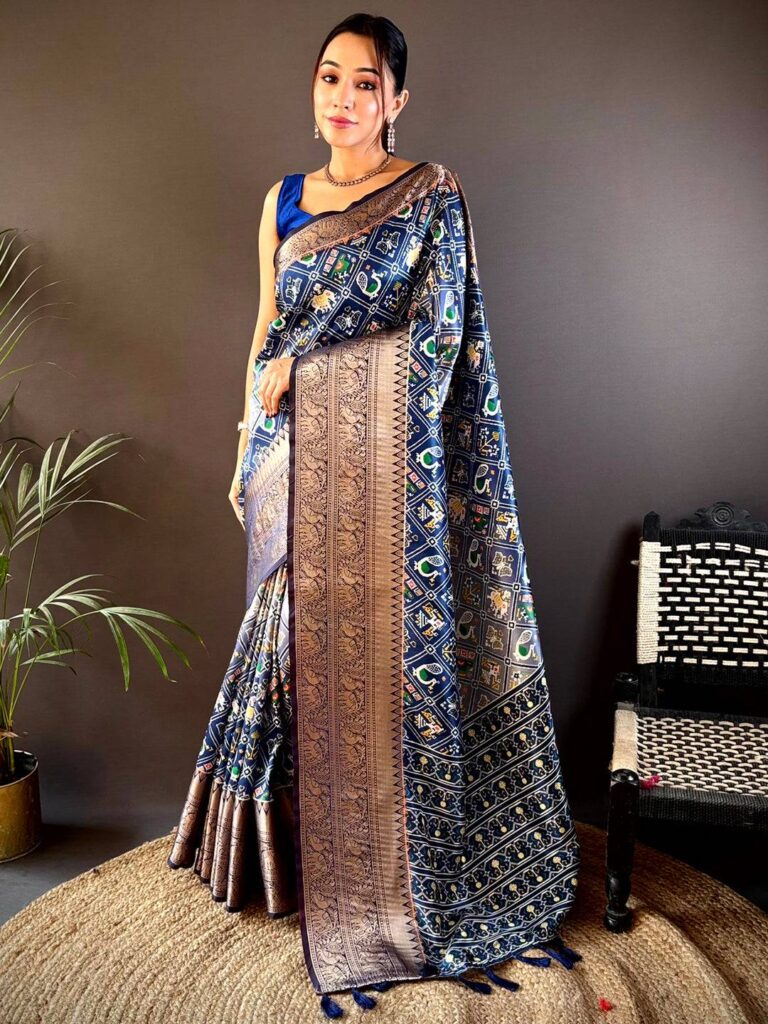
Among all handloom sarees, the Patola saree from Gujarat is the rarest and most expensive. Known for its double ikat weaving, where both the warp and weft threads are dyed before weaving, each Patola saree is truly one of a kind. The precision required is unmatched – artisans need years of training to master the craft. Brides who choose Patola sarees usually go for their bold geometric designs and bright jewel tones. While they are expensive, they are considered timeless investments, often worn during special occasions long after the wedding.
5. Chanderi – Light, Elegant, and Effortless
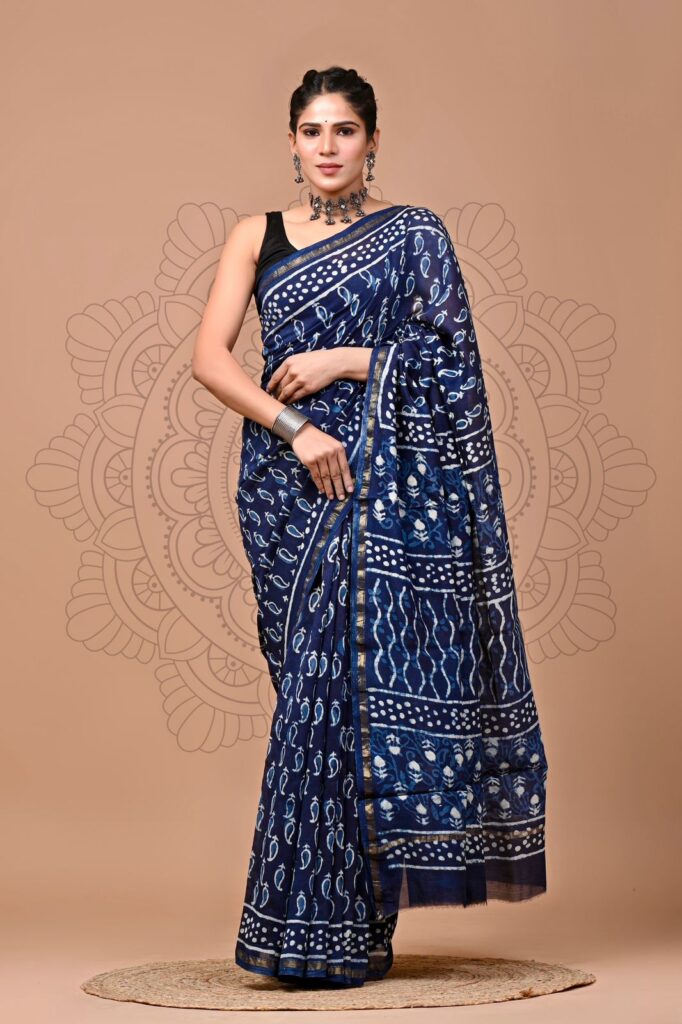
Not every wedding outfit has to be heavy. For pre-wedding rituals like mehendi, haldi, or even reception dinners, many brides prefer the Chanderi saree. Originating from Madhya Pradesh, these sarees are soft, light, and carry a subtle sheen. The beauty of Chanderi lies in its simplicity – delicate buttas, sheer texture, and fine golden borders. Brides who don’t want to be weighed down by layers of silk during long ceremonies often pick Chanderi for comfort as well as elegance. That’s why Chanderi sarees have become a trending choice for modern brides looking for a graceful yet traditional wedding look.
Styling It Right
One tip – don’t overload. A heavy Banarasi with polki or kundan jewelry looks stunning. If it’s a Kanjeevaram, go with temple jewelry. A plain silk blouse in contrast colors can actually look better than a designer one sometimes.
Care Tips (Because They Deserve It)
- Always wrap in muslin cloth, not plastic.
- Refold after 3–4 months.
- Keep naphthalene balls away – use neem leaves instead.
Final Word
Whether it’s your main wedding outfit or something you keep for the reception, an Indian handloom saree for wedding moments will never disappoint. It’s not just fashion – it’s memory, culture, and beauty rolled into six yards of fabric.

